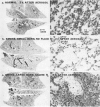Abstract
Mortality and morbidity in fire victims is largely a function of injury due to heat and/or smoke. While degree and area of burn together constitute a reliable numerical measure of cutaneous injury due to heat, as yet no satisfactory measure of inhalation injury has been developed. In this study, with fluid resuscitation and pulmonary infection eliminated as variables, dose-response curves were constructed as a measure of inhalation injury by exposing burned and unburned animals to smoke of constant temperature and toxicity under conditions similar to the fire situation. In these animals, the natural history of inhalation injury: 1) proved to be a relatively simple function of smoke and burn dosage; 2) appeared to simulate and therefore aid interpretation of the inhalation injury syndromes seen in human fire victims; 3) indicated that within limits [COHgb] measured immediately after injury was directly proportional to, and might prove to be a clinically valuable measure of, absorbed dose of smoke. While fluid resuscitation and pulmonary contamination with bacterial pathogens may be eliminated experimentally, such is not the case with the vast majority of fire victims admitted to burn services with associated inhalation injury. Fluid resuscitation and inhalation of a Pseudomonas aeruginosa aerosol were therefore included serially in a study of animals with inhalation injury and burns large enough to require fluid resuscitation. In these animals it was demonstrated that: 1) pulmonary edema occurred in association with too little rather than too much fluid therapy; 2) after aerosol inoculation, fatal bacterial pneumonia was difficult to produce when inhalation injury was associated with no or only small burns, but common when associated with no or only small burns, but common when associated with a burn large enough to require fluid resuscitation.
Full text
PDF










Images in this article
Selected References
These references are in PubMed. This may not be the complete list of references from this article.
- Achauer B. M., Allyn P. A., Furnas D. W., Bartlett R. H. Pulmonary complications of burns: the major threat to the burn patient. Ann Surg. 1973 Mar;177(3):311–319. doi: 10.1097/00000658-197303000-00012. [DOI] [PMC free article] [PubMed] [Google Scholar]
- Ambiavagar M., Chalon J., Zargham I. Tracheobronchial cytologic changes following lower airway thermal injury. A preliminary report. J Trauma. 1974 Apr;14(4):280–289. doi: 10.1097/00005373-197404000-00002. [DOI] [PubMed] [Google Scholar]
- Aub J. C., Pittman H., Brues A. M. THE PULMONARY COMPLICATIONS: A CLINICAL DESCRIPTION. Ann Surg. 1943 Jun;117(6):834–840. doi: 10.1097/00000658-194311760-00006. [DOI] [PMC free article] [PubMed] [Google Scholar]
- DiVincenti F. C., Pruitt B. A., Jr, Reckler J. M. Inhalation injuries. J Trauma. 1971 Feb;11(2):109–117. doi: 10.1097/00005373-197102000-00002. [DOI] [PubMed] [Google Scholar]
- Foley F. D., Moncrief J. A., Mason A. D., Jr Pathology of the lung in fatally burned patints. Ann Surg. 1968 Feb;167(2):251–264. doi: 10.1097/00000658-196802000-00015. [DOI] [PMC free article] [PubMed] [Google Scholar]
- Garzon A. A., Seltzer B., Song I. C., Bromberg B. E., Karlson K. E. Respiratory mechanics in patients with inhalation burns. J Trauma. 1970 Jan;10(1):57–62. doi: 10.1097/00005373-197001000-00007. [DOI] [PubMed] [Google Scholar]
- MARKEY K. L., SMALLMAN E., MILLICAN R. C. THE EFFICACY AND TOXICITY OF ISO-, HYPO-, AND HYPERTONIC SODIUM SOLUTIONS IN THE TREATMENT OF BURN SHOCK IN MICE. Surgery. 1965 May;57:698–704. [PubMed] [Google Scholar]
- Mellins R. B. Respiratory complications of smoke inhalation in victims of fires. J Pediatr. 1975 Jul;87(1):1–7. doi: 10.1016/s0022-3476(75)80059-x. [DOI] [PubMed] [Google Scholar]
- Moritz A. R., Henriques F. C., McLean R. The Effects of Inhaled Heat on the Air Passages and Lungs: An Experimental Investigation. Am J Pathol. 1945 Mar;21(2):311–331. [PMC free article] [PubMed] [Google Scholar]
- Moylan J. A., Adib K., Birnbaum M. Fiberoptic bronchoscopy following thermal injury. Surg Gynecol Obstet. 1975 Apr;140(4):541–543. [PubMed] [Google Scholar]
- Moylan J. A., Jr, Wilmore D. W., Mouton D. E., Pruitt B. A., Jr Early diagnosis of inhalation injury using 133 xenon lung scan. Ann Surg. 1972 Oct;176(4):477–484. doi: 10.1097/00000658-197210000-00005. [DOI] [PMC free article] [PubMed] [Google Scholar]
- PHILLIPS A. W., COPE O. Burn therapy: III. Beware the facial burn. Ann Surg. 1962 Nov;156:759–766. doi: 10.1097/00000658-196211000-00009. [DOI] [PMC free article] [PubMed] [Google Scholar]
- Stone H. H., Martin J. D., Jr Pulmonary injury associated with thermal burns. Surg Gynecol Obstet. 1969 Dec;129(6):1242–1246. [PubMed] [Google Scholar]
- Wanner A., Cutchavaree A. Early recognition of upper airway obstruction following smoke inhalation. Am Rev Respir Dis. 1973 Dec;108(6):1421–1423. doi: 10.1164/arrd.1973.108.6.1421. [DOI] [PubMed] [Google Scholar]
- Webster J. R., McCabe M. M., Karp M. Recognition and management of smoke inhalation. JAMA. 1967 Jul 31;201(5):287–290. [PubMed] [Google Scholar]
- Zikria B. A., Budd D. C., Floch F., Ferrer J. M. What is clinical smoke poisoning? Ann Surg. 1975 Feb;181(2):151–156. doi: 10.1097/00000658-197502000-00004. [DOI] [PMC free article] [PubMed] [Google Scholar]
- Zikria B. A., Weston G. C., Chodoff M., Ferrer J. M. Smoke and carbon monoxide poisoning in fire victims. J Trauma. 1972 Aug;12(8):641–645. doi: 10.1097/00005373-197208000-00001. [DOI] [PubMed] [Google Scholar]




